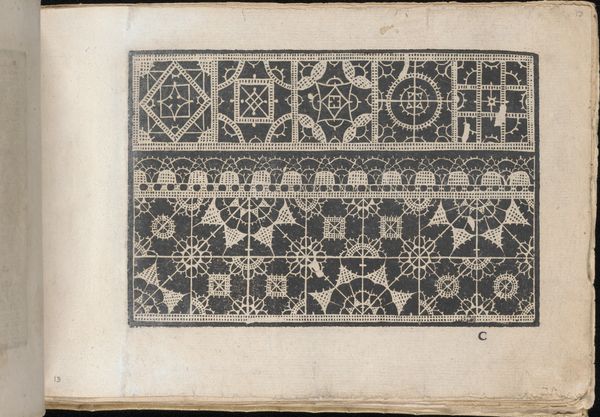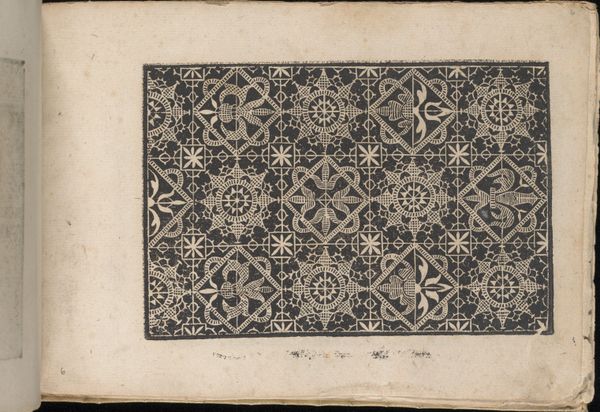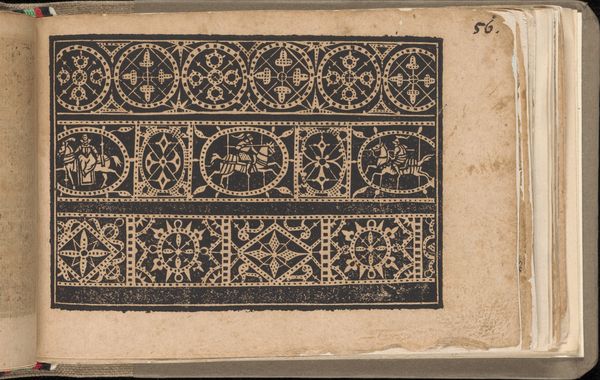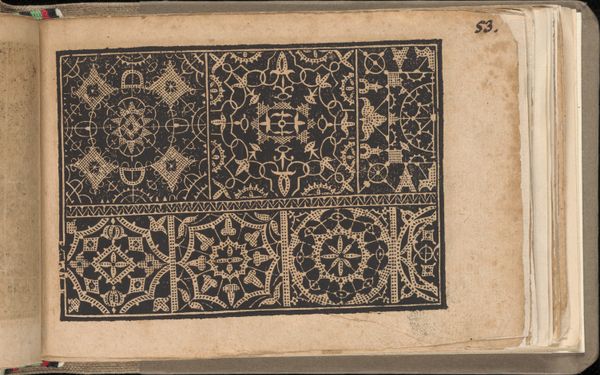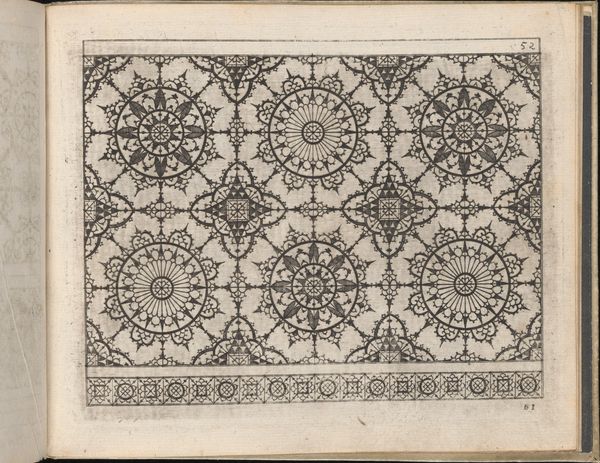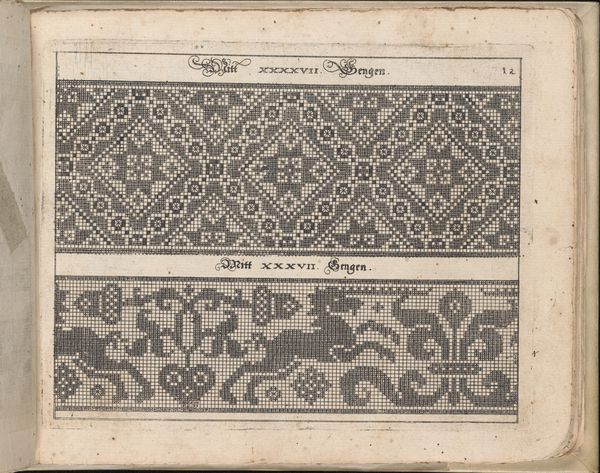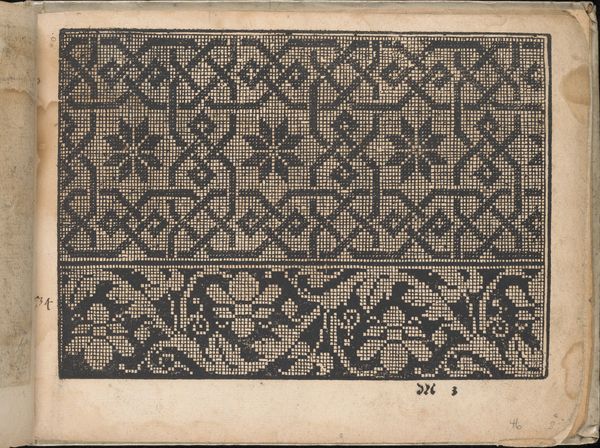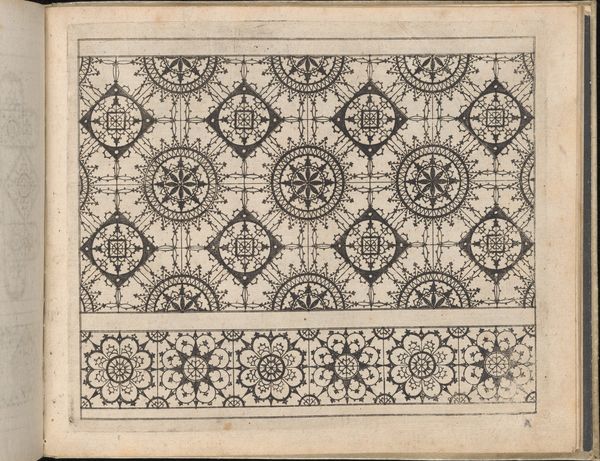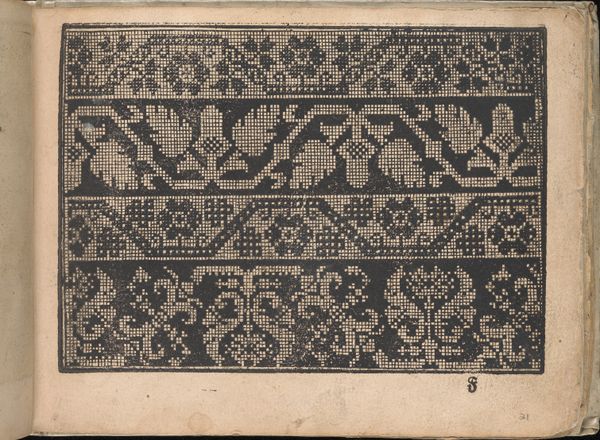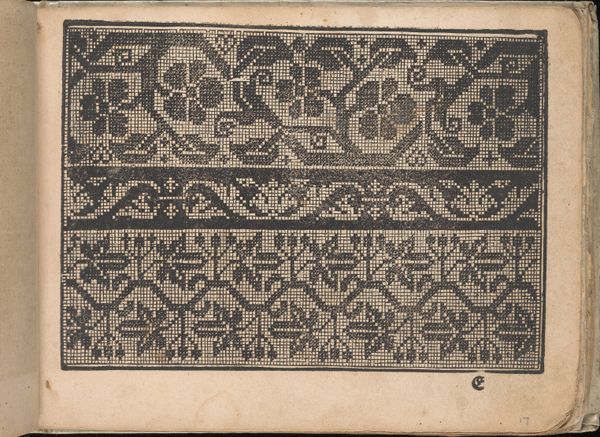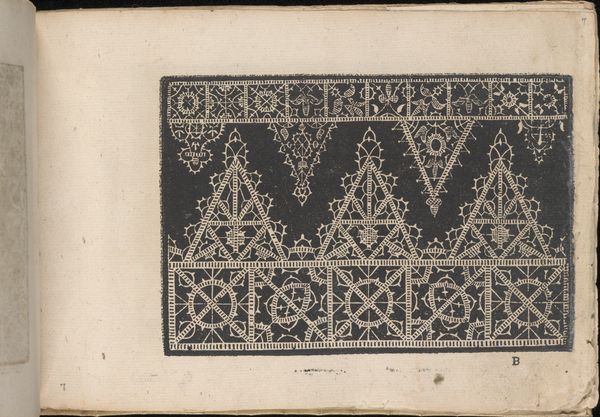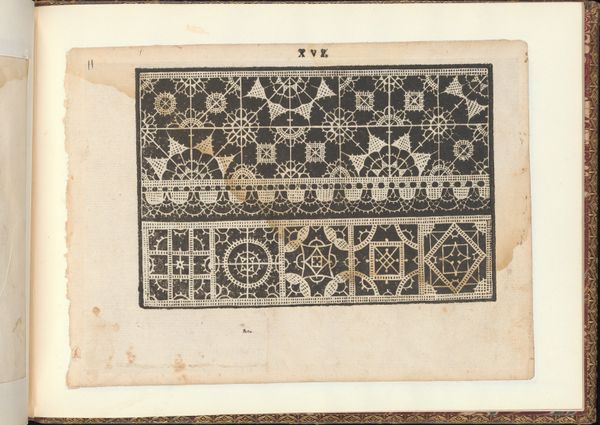
Fiori di Ricami Nuovamente Posti in Luce, page 11 (recto) 1591
0:00
0:00
drawing, graphic-art, ornament, print, textile, paper, woodcut, engraving
#
drawing
#
graphic-art
#
ornament
# print
#
book
#
textile
#
paper
#
11_renaissance
#
tile art
#
linocut print
#
woodcut
#
men
#
northern-renaissance
#
italian-renaissance
#
engraving
Dimensions: Overall: 5 1/2 x 7 7/8 in. (14 x 20 cm)
Copyright: Public Domain
Curator: The artistry in this piece is simply breathtaking. We're looking at page 11 from "Fiori di Ricami Nuovamente Posti in Luce," a print by Matteo Florimi, created in 1591. It resides here at the Metropolitan Museum of Art. Editor: My first thought? Intricate. Almost overwhelming in its detail, and rendered so meticulously. I’m struck by how this flat plane evokes textile work, a visual conversation between print and material craft. Curator: Indeed. And what this manual suggests about the lives of Renaissance women who engaged with these designs is particularly relevant. Needlework was a significant cultural practice, not merely a pastime. This was an era grappling with prescribed roles and, in that sense, these “flowers of embroidery” represent a potent symbol of creativity within defined spaces. Editor: Right. I wonder about the division of labor in producing something like this. The intellectual labor of the designer versus the repetitive handwork needed for needlecraft— it brings up interesting tensions between production and consumption, between artistry and function. These pattern books had very real and tangible use in period households. Curator: Exactly, considering this work’s creation coincided with rising sumptuary laws, such pieces gain political weight. Restricting ornamentation among certain classes inadvertently amplified the symbolic power of expertly crafted textiles among those still permitted to flaunt them. It also suggests resistance to plain austerity via embellishment of the everyday. Editor: Yes. It points towards an interesting economic ecosystem around pattern design, production, and the material culture of textiles at the time, even subtly hinting at class divisions and the role of conspicuous consumption. Curator: Precisely! This engraving serves not just as pattern but also a mirror reflecting back prevailing societal structures and individual strategies within them. The print embodies not just artistic intention but also lived experiences inextricably woven into cultural fabrics. Editor: Ultimately, examining this work compels us to consider design beyond the visual; design as deeply intertwined with labor, value, and even subtle defiance within its own historical conditions of production and reception. A great thing to keep in mind today.
Comments
No comments
Be the first to comment and join the conversation on the ultimate creative platform.

